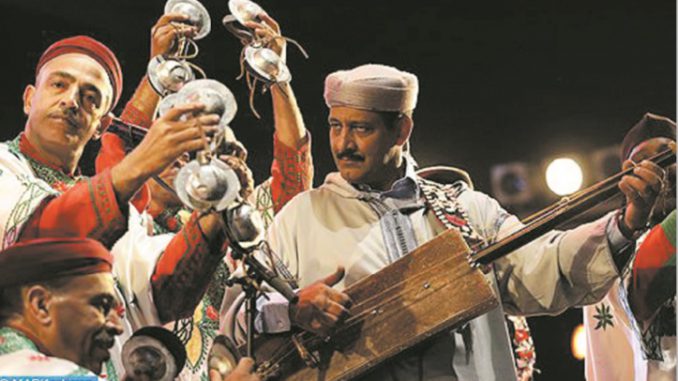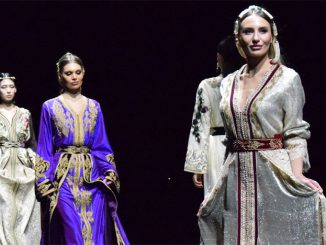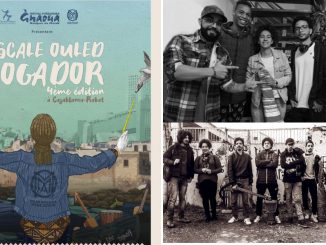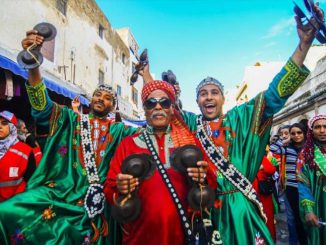
Marrakech celebrated on Wednesday the inscription of Gnawa art on UNESCO’s list of intangible heritage. Initiated by the Yerma Gnaoua Association, the Assalam Al Masrahi Association of Marrakech, in addition to several actors of the ochre city, this evening was marked by the participation of several Maâlems of national renown, including Ahmed Bakbou, Mustapha Bakbou, Abdelkebir Marchane, Mohamed Kouyou, Hassan Gadiri, Abdelkebir Ben Seloum and Eddahbi Moulay Ettayeb.
On this occasion, the President of the Yerma Gnawa Association, Abdeslam Alikane, pointed out that this recognition crowns the efforts of several actors who supported the inclusion of Gnawa art on the UNESCO list of intangible heritage, noting that this inclusion on the UNESCO heritage list opens the doors of universalism to this art form. It also noted that this inscription will encourage the creation of a museum dedicated to Gnawa art and the integration of this musical form into the programs of conservatories and specialized institutes, in order to encourage young people to innovate in this art, preserve it and develop it.
Gnawa art, it should be recalled, was inscribed last December in Bogotá, by the Intergovernmental Committee for the Protection of the Intangible Cultural Heritage of the United Nations Educational, Scientific and Cultural Organization (UNESCO) on the Representative List of the Intangible Cultural Heritage of Humanity.
Gnawa art is added to seven other elements of national heritage already inscribed on this list, namely: “The cultural space of Jemaa el-Fna Square”, “The Moussem of Tan-Tan”, “The Mediterranean diet”, “Falconry”, “The Sefrou Cherry Festival”, “Practices and skills related to the argan tree” and “The Taskiwin”, a martial dance of the Western High Atlas classified as “in need of urgent preservation”.
The Representative List of the Intangible Cultural Heritage of Humanity, which to this day has 429 elements inscribed, aims to ensure greater visibility for cultural practices and skills carried by communities.




Thank you for the sensible critique. Me & my neighbor were just preparing to do a little research on this. We got a grab a book from our area library but I think I learned more from this post. I am very glad to see such fantastic info being shared freely out there.